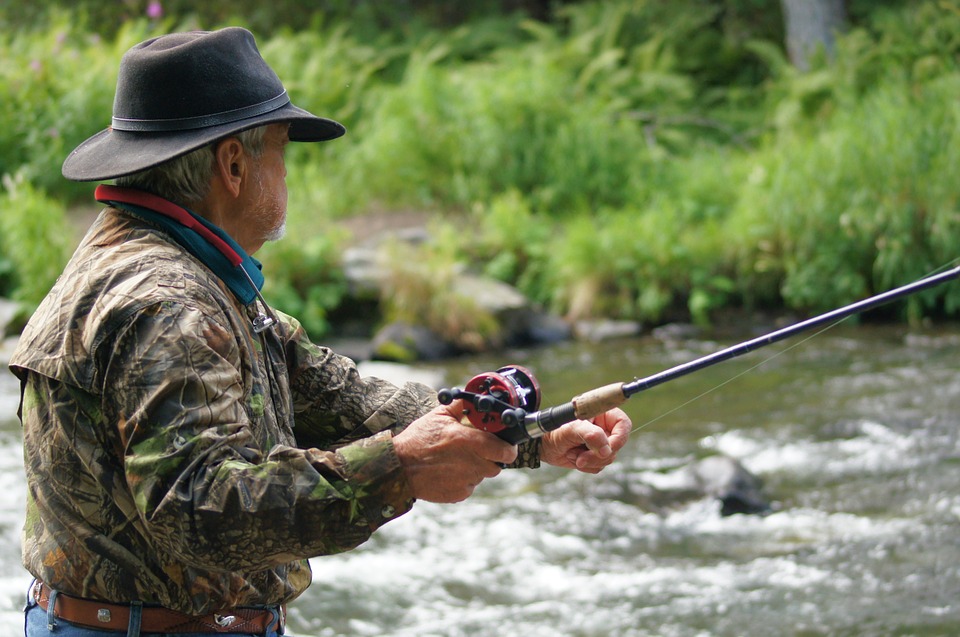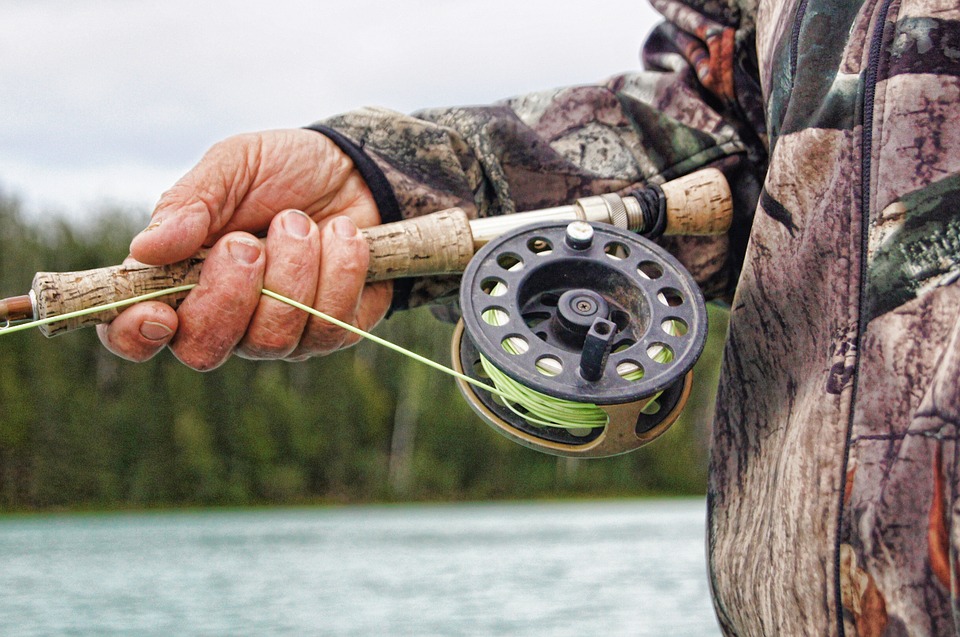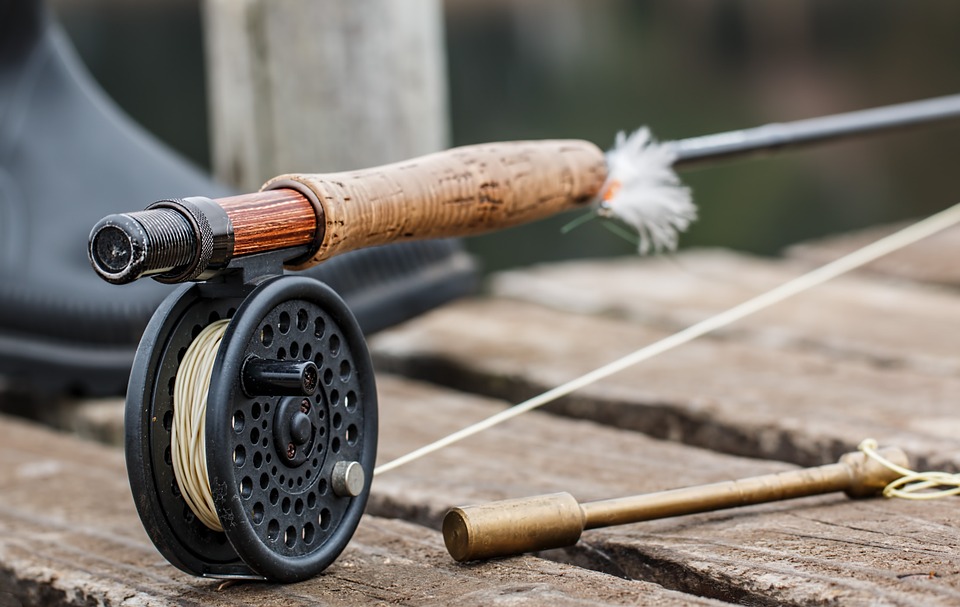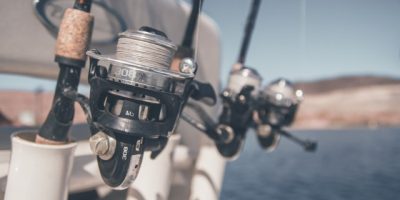A fishing reel is shaped like a cylinder and is attached to a fishing rod. Its main function is to set the line, cast the line on the water, aid for long-distance fishing, and enhance the accuracy for improved fishing and casting outcomes. Whether you are utilizing a spinning wheel, a casting real, or spin-cast reel, it is crucial to know how do fishing reels work. The mechanism of every fishing reel is essentially the same. But it should be noted that the two most common types are the spinning wheel in the baitcasting real. The other types of fishing reels are distinct from each other based on their level of difficulty.
How to Setup and Use a Spinning Rod and Reel in 10 steps–How Do Fishing Reels Work?

Gathering your equipment
Spinning Reel
If you have not bought a spinning reel, you should invest some time researching what type of reel will suit your needs.
It will also help if you visited your local tackle shop and check out the reel that is best for your angling adventure. Ask the staff or available experts.
Spinning Rod
Most of the time, spinning rods are created for specific reels. It is recommended that you go to your neighborhood fishing store to make sure that you are using the rod that best serves your needs.
Fishing Line
The type of fishing line you will purchase should match the type of fish you are targeting.
Bait and hook
The bait design you should use will also be dictated by the species of fish you want to catch. Take the time to do your research before you embark on a fishing expedition. It should be noted that you should bring multiple types of baits when you fish since the fish may be attracted to different baits during different seasons.
Scissors
Bring any scissors. However, you may want to bring durable and tough kitchen scissors.
Know the important parts of the equipment.
The Reel
The spool is where the fishing line is placed and wound.
When the handle spins, the line is forced back in the reel.
The bail is a metal component that can hold the line from getting loosened from the spool. Once it is closed, there is little to no line that can escape the spool freely. If it is open, the line can freely come out of the spool.
The reel is a puzzle-like piece that firmly affixes the rod to the real.
How do fishing reels work? The drag allows you to fix how effortlessly a line can come out of the spool once the bail is closed. Once it is tied, the line can freely come out of the spool since the bail is closed. Once the knob is loosened, the line can freely come out with only a little force applied when the bail is closed.
The line roller is utilized as a guide that directs the line from the spool to the rod.
The Rod
The rod tip is the final 4 inches of the rod and is the rod’s slimmest part, which can aid you in feeling for fish bites. However, it should be noted that the tip of your rod tends to break easily.
The guides are the circles in which the line passes and keep the lines close to the rod.
The reel seat is another puzzle-like piece in which the reel foot connects to so the reel will be secured to the rod.
The handle is often created from soft material compared to the rod since it will be what you will be holding most of the time when you are fishing.
Connecting the reel to the rod
first step
- The first step is to loosen the real seat attached to the rod.
- Adjust reel seat to be wide enough so the real foot can fit in.
- Make the real seat big enough so the reel foot can fit.
second step
- Put the reel foot into the real seat.
third step
- Make sure that you tighten the reel seat. Repeat the previous steps until the reel is firmly placed.
Spooling the real
The process of spooling or putting the line on the reel is crucial in fishing, and being careless with this process can lead to difficulties and frustration during fishing.
Step one
Open the bail.
step two
Put the line around the reel. There should be two pieces of the line once they are connected to the reel.
step three
using these two pieces, tie a standard knot; in technical terms, this is the overhand knot
step four
Tie another knot to the pieces of line
step five
Tightly close the bail
step six
Hold the line away from the reel tightly. This will stop the line from getting all tangled up once the line is put on the reel.
step seven
How do fishing reels work? Wind the reel until the optimum amount of line is on it. The quantity of reel you will need will depend on the type of reel you have available and what kind of line you are using. It should be noted that some reels utilize a line marked on the side, which tells you the optimum amount of line for the real.
Stringing the Rod

step one
Hold the tip of the line with one hand.
step two
Carefully open the bill arm with your other hand.
step three
Put the line through each of the rod’s guide. Begin at the bottom and end at the top. Please make sure not to let go of the line, or it may fall away from the guides.
Tying the knot
How do fishing reels work? In this crucial step, you are instructed on how to tie a basic fishing knot. The benefit of this type of knot is it is simple and only takes a minimum amount of time to complete. On the downside, it is not a strong knot and may not even be durable. Meaning it can get loosened anytime, making it possible for the fish you have caught to escape out of the knot. If your target fish is over 15 pounds, there are a few complicated knots with optimum strength and will stay firmly.
- Palomar knot
- Clinch knot
- Albright knot
step one
Put the line into the hook’s eye, creating one piece of line on the side of the hook. It is crucial to hold the line with your thumb and pointed finger.
step two
How do fishing reels work? Hold each piece in two different hands and cross one piece over the other. You should now have each piece of line in one hand. There ought to be a loose loop on your index finger. There must also be a line that is dangling from your index finger and your thumb.
step three
How do fishing reels work? Put the dangling piece of line into the circle of the coil. The circle must stay intact once you release your index finger. In case the circle unravels, repeat the previous steps, and put the line into the other end of the coil.
step four
Make sure you tighten the knot by pulling firmly at each end of the line.
step five
Repeat the previous step at least three more times to make sure the knot won’t get loosened.
step six
How do fishing reels work? Make sure that you cut away the loose line about ¼ inches away from the hook’s eye. It is crucial not to cut the line connected to the rod.
Setting the drag knob
The Drag Knob
step one
Turn the drag knob in a clockwise direction to tighten or in a counterclockwise direction to loosen.
step two
Examine everything by manually pulling the line from your reel to determine how the drag has been affected.
step three
How do fishing reels work? Repeat the previous steps until the drag is positioned at a desirable amount. It may take a bit of practice to determine what to set your drag to. You may have to ask someone with expertise if possible. If there are no experts available, simply set your drag looser since setting it tightly can result in the line breaking easily when you reel in a fish. The drag must be set prior to fishing. However, you can always change the drag while you’re fishing if you realize that the drag is not firm.
The following are some indications that will happen if the drag setting is not correct:
- The drag is to loose
- The fish easily escapes
- The hook does not have enough tension, which gives the fish the chance to spit out the hook.
- The drag may be too tight
- The rod bends excessively, but the fish is ignoring the line.
- The line seems to have a lot of tension on it, causing it to break.
How do fishing reels work? It is crucial to know that when you are reeling in a fish, the fish should be able to take the line from the reel unless, of course, the fish is extremely small. How tight the drag should be will be dictated by the type of fish you are targeting and the type of line you are utlizing. You will learn quickly what your drag needs to be set once you are in the water and start angling.
Casting the bait

step one
How do fishing reels work? Give about 1-1 1/2 feet of line allowance from the tip of the rod.
step two
How do fishing reels work? Put the rod a few inches above the reel’s base and the line that is parallel to the rod. Make sure to use the hand that you will be reeling the fish with.
step three
With your opposite hand, open the bail. In case the hook falls, make sure you are holding the right line.
step four
Grip the base of the rod with the same hand, repeat step two
step five
How do fishing reels work? Make sure that you put the rod backward, far from your target. The rod must be circling around the point in between your hands.
step six
How do fishing reels work? Quickly place the rod towards your target and release your hand, repeating the first step at the top of your cast. It is crucial to hold on tight with your hand, similar to step three, or else you may find that the rod has slipped from your hands. How do fishing reels work?
In case your bait just landed several feet in front of you, don’t worry. It happens to everyone when they are just beginning to learn how to cast. Just keep on practicing, and you will soon master casting techniques in no time.
Reeling in the line
step one
Close the bait firmly.
step two
Put the line in the line roller
step three
Make sure you turn the reel handle.
Note:
How do fishing reels work? This step is all about the basic mechanics of reeling the line. But it is crucial to note that there are various ways that you can reel in the fish. You can utilize fast or slow reeling or reel at a consistent speed, you can even jerk in fast and slow intervals, and you can also reel with the rod tip either in an up or down position.
There is no perfect or ideal way for all these variables since the fish will prefer different styles in different seasons and even different hours of the day. Some factors that influence what the fish want are the temperature of the water, the time of the day, the weather, and the type of bait you are utilizing.
Start catching some fish
You have now completed the crucial steps, and your spinning rod and reel is set up and ready for fishing. Once you have done this, you are now ready to reap the benefits from the time and work you have invested. So, go out there in the wild outdoors to your favorite fishing spot!
Final thoughts
If you are just starting in angling, you may not know how the mechanisms of your equipment work. Angling requires you to be patient, flexible, and adaptable to the situation. It would be best if you thought quickly to reel in the fish. Before you start on any fishing expedition, it is crucial to master how do fishing reels work. Once you know the steps, you can start improvising as you gain experience.


